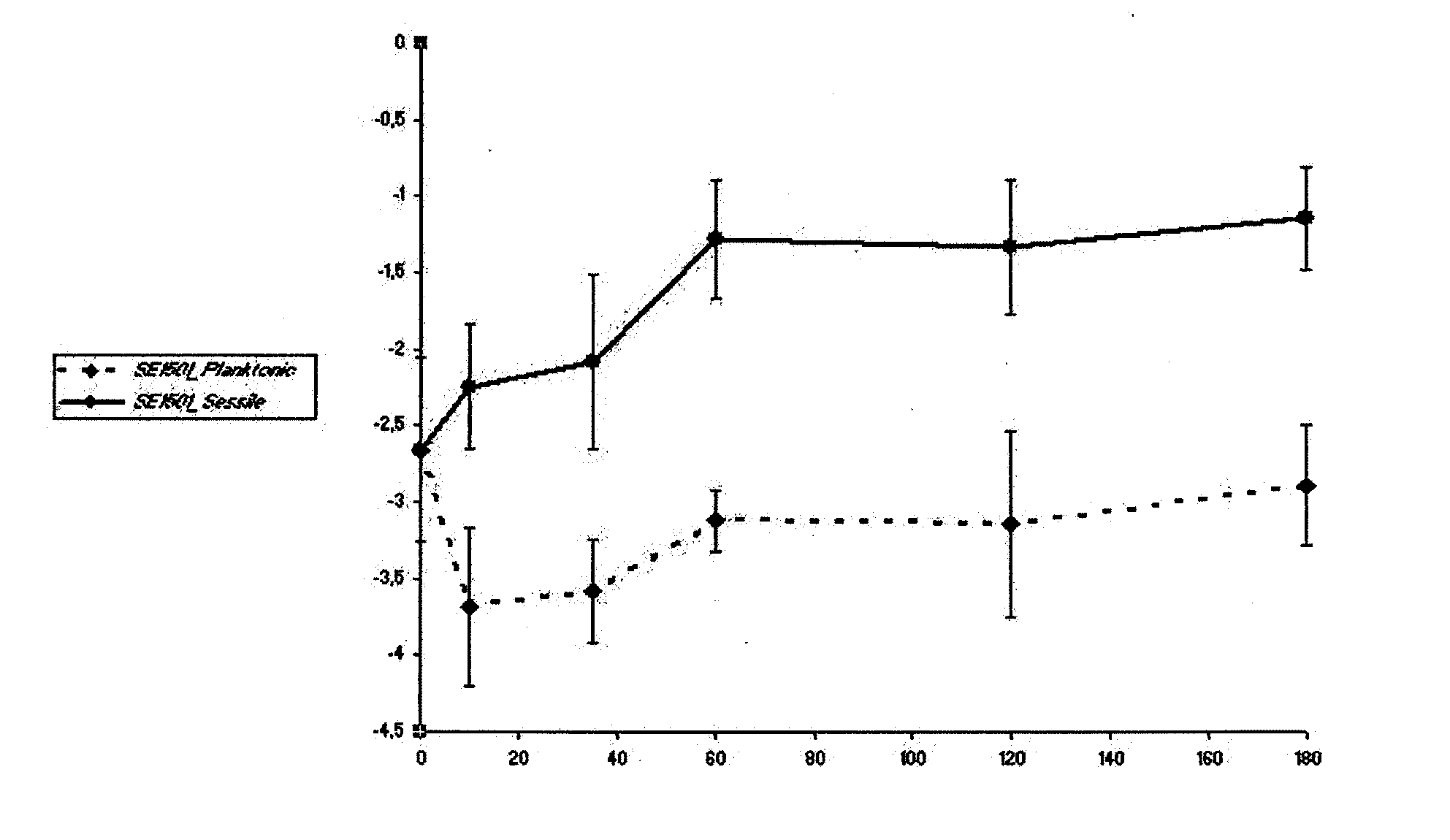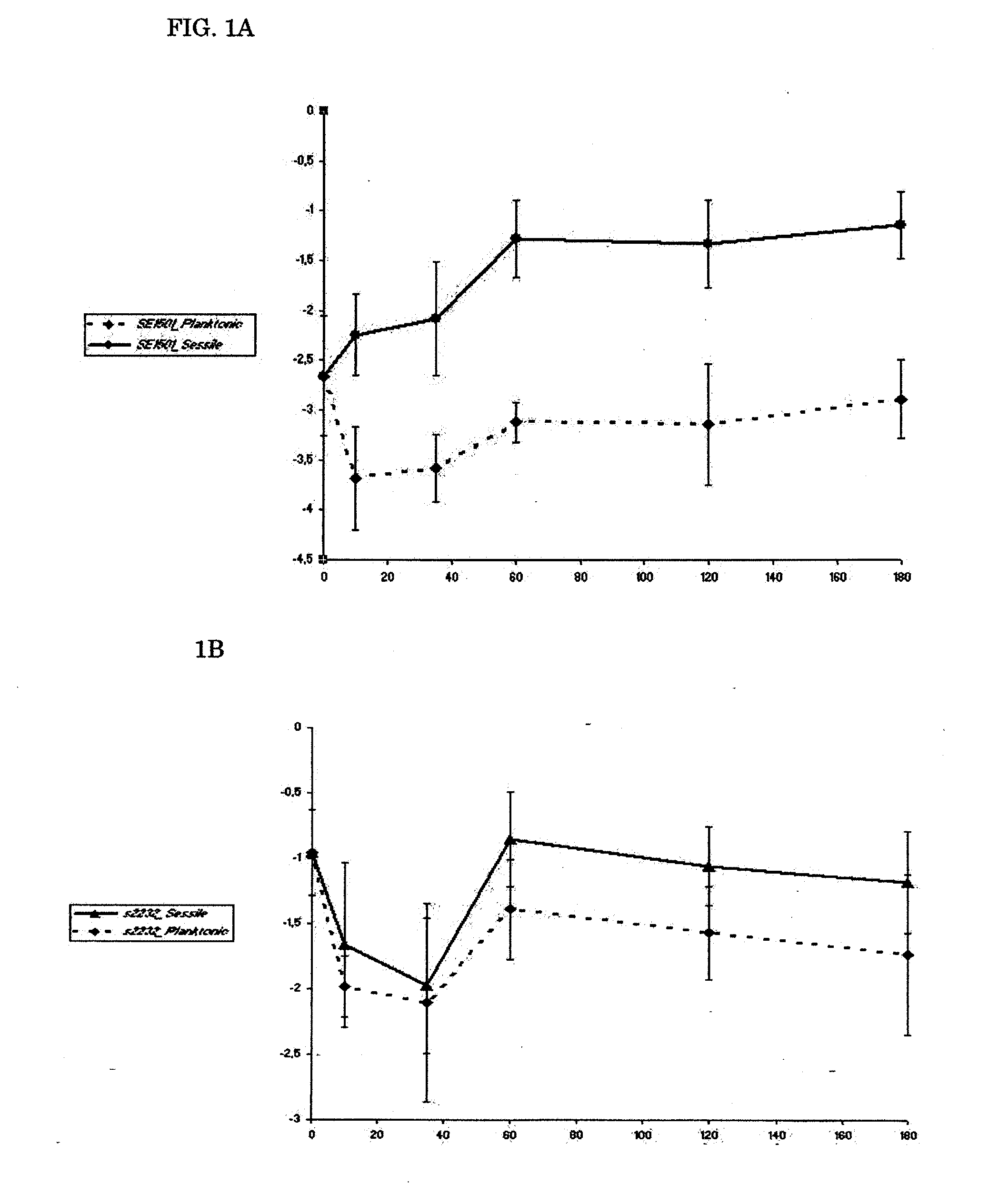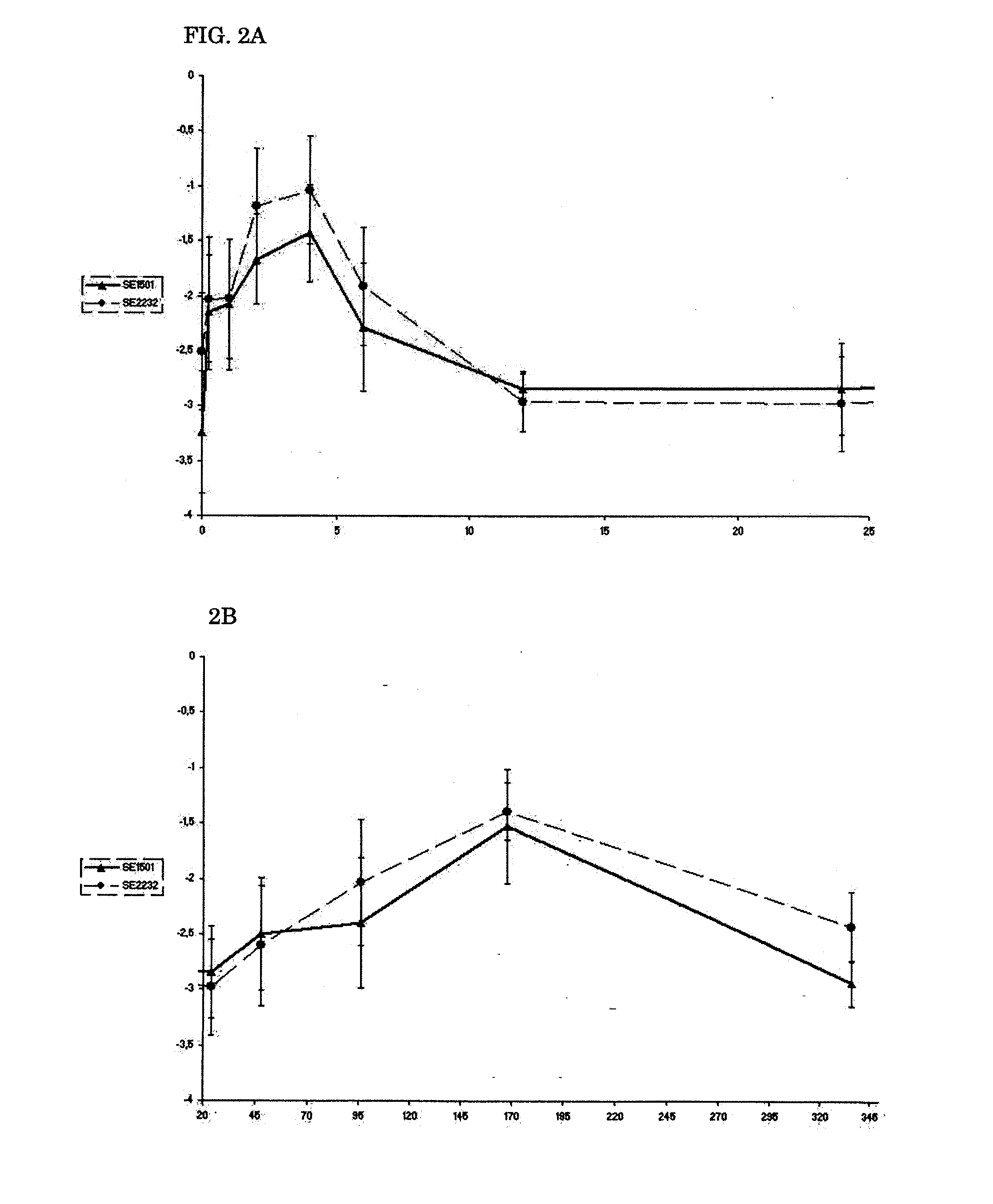Prevention of staphylococcus biofilm formation
a technology of staphylococcus and biofilm, applied in the field of prevention of staphylococcus biofilm, can solve the problems of failure of conventional antibiotic therapy, limited understanding of the mechanism of detachment process, etc., and achieve the effects of preventing biofilm formation, preventing biofilm formation, and preventing biofilm formation
- Summary
- Abstract
- Description
- Claims
- Application Information
AI Technical Summary
Benefits of technology
Problems solved by technology
Method used
Image
Examples
example 1
Expression of SE2232 and SE1501 In Vitro and In Vivo
Bacteria Used.
[0088]For all experiments, a previously well-characterized biofilm-producing S. epidermidis strain, strain 10b, was used. S. epidermidis 10b was isolated from a patient with a proven catheter-related bloodstream infection (31, 32, 33, 34). It is homogeneously oxacillin resistant and has a 100% infection rate in the rat model used (34).
Gene Identification.
[0089]The sequences of the genes studied were retrieved from the National Center for Biotechnology Information (NCBI) GenBank (Table 1). On the basis of the sequences, primers were designed with Primer Express 2.0 software (Applied Biosystems Division of Perkin-Elmer) and used to amplify part of the corresponding genes in S. epidermidis 10b. The following thermal cycling conditions were used: 5 min at 95° C., followed by 25 repeats of 30 s at 95° C., 30 s at related annealing temperatures (Table 1) and 1 min at 72° C. followed by 7 min at 72° C. and holding at 4° C. P...
example 2
Production of Antibodies
Cloning, Expression and Purification of Recombinant Proteins.
[0105]We amplified the genes for production of the recombinant proteins by PCR with primers of SE1501F (5′ CACGTGCTAGCGCTGAATCAAACACTTCAGTTTCTTCT 3′), SE1501R (5′ATGCGGATCCTAGTGATGGTGATGGTGATGCATACCTGTATTTGGTAAT AG 3′), SE2232F (5′ ACGTGCTAGCGCAGATTCAGAAAGTACATC 3′) and SE2232R (5′ATGCGGATCCTAGTGATGGTGATGGTGATGATCAGCTGTAGCTGTTCC 3′), which incorporate flanking NheI and BamHI restriction sites and sequence coding for a C-terminal His6 tag. The genes were cloned into a pET11c expression vector (Stratagene, LaJolla, Calif.) and we electrotransformed the recombinant plasmids into E. coli BL21 (DE3). The expression of recombinant protein was induced by the addition of IPTG, and the recombinant proteins were purified by Ni+ affinity chromatography with the HisTrap™ Kit (Amersham Pharmacia, Uppsala, Sweden) according to the manufactures recommendations. We determined the purity of the recombinant proteins ...
example 3
Biofilm Inhibition
[0114]The amount of biofilm formed was determined by a semiquantitive microtiter plate method as described (18, 38). A frozen culture of S. epidermidis 10b was grown to the end-exponential growth phase, pelleted, and resuspended in 0.9% NaCl, diluted to an OD600 of 0.05 (˜5×107 cells) and mixed with polyclonal antibodies. Sixplicate samples (each containing 0.1 ml) were added to individual wells of a 96-well flat-bottom microwell plate (comp). Microwell plates were incubated 2 h at 4° C. and then overnight at 37° C. After three washes with PBS, any remaining biofilm was stained with safranin O dye for 1 min and washed with PBS again. Optical density at 492 nm (OD492) was determined with a 96-well plate spectrometer reader. Percent inhibition of biofilm formation was calculated by using the following formula: (A492, positive−A492, antibody) / (A492, positive−A492, negative)×100%. (18). 0.9% NaCl medium without bacteria was used as negative con...
PUM
| Property | Measurement | Unit |
|---|---|---|
| Fraction | aaaaa | aaaaa |
| Composition | aaaaa | aaaaa |
| Immunogenicity | aaaaa | aaaaa |
Abstract
Description
Claims
Application Information
 Login to View More
Login to View More - R&D
- Intellectual Property
- Life Sciences
- Materials
- Tech Scout
- Unparalleled Data Quality
- Higher Quality Content
- 60% Fewer Hallucinations
Browse by: Latest US Patents, China's latest patents, Technical Efficacy Thesaurus, Application Domain, Technology Topic, Popular Technical Reports.
© 2025 PatSnap. All rights reserved.Legal|Privacy policy|Modern Slavery Act Transparency Statement|Sitemap|About US| Contact US: help@patsnap.com



